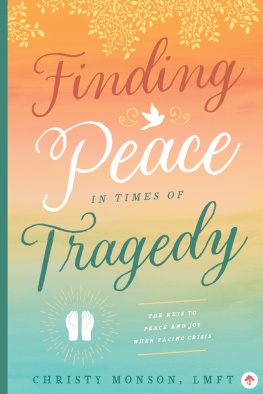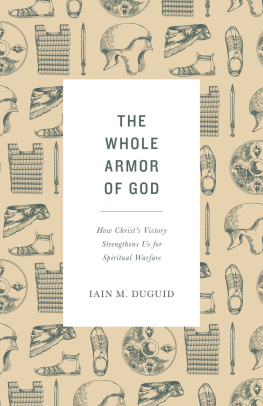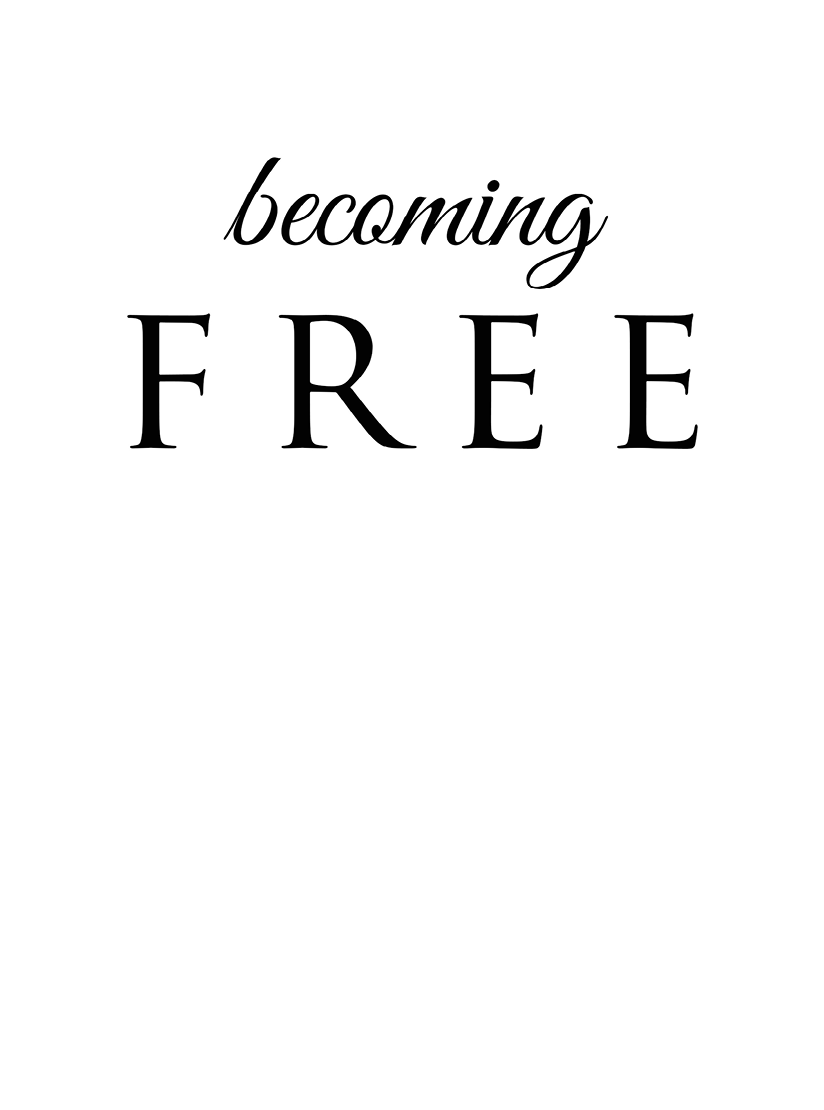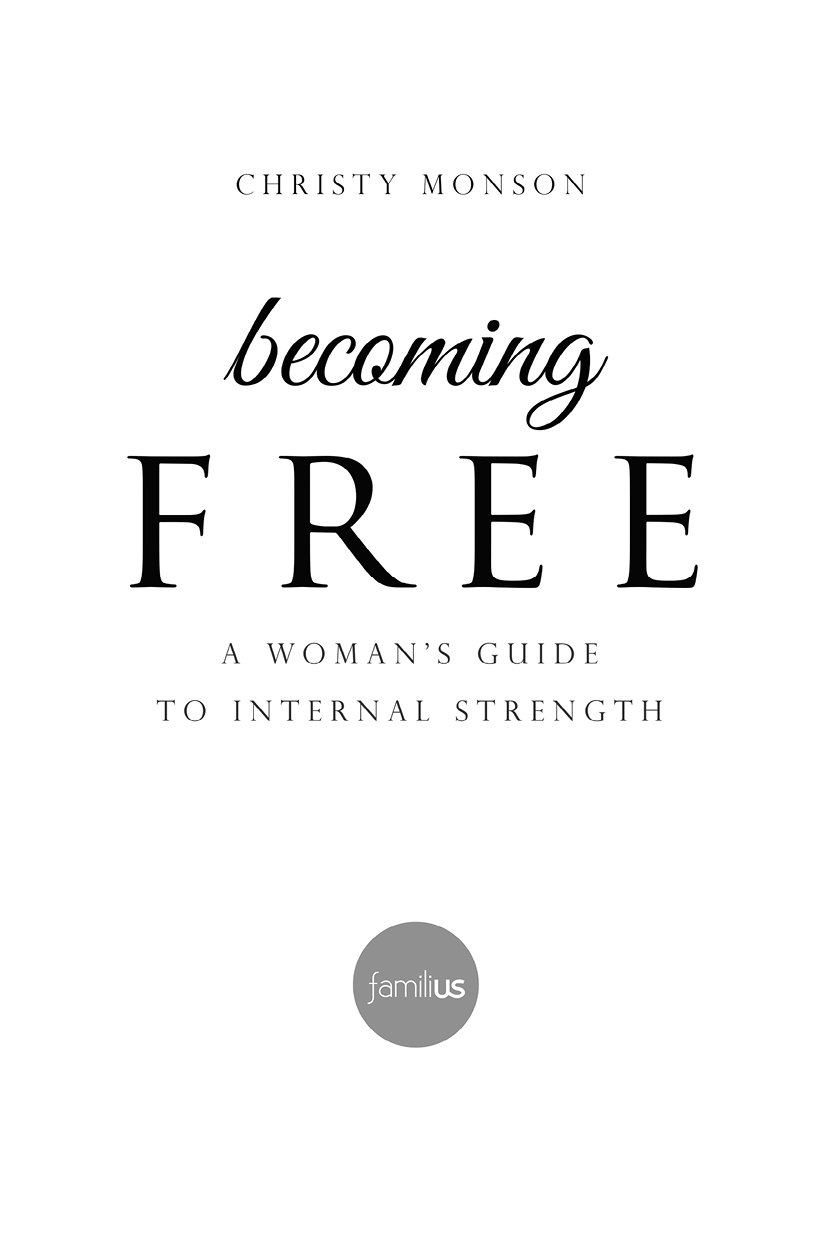I am grateful to my husband and children for their unfailing love and support. Thanks also to my critique group for helping me become a better writer: Drieniem Hatting, Lynda Scott, Patricia Bossano, and Michelle McKinnon. Deepest appreciation also goes to my editor, Aven Rose. Her expertise, good ideas, and critical feedback have enhanced the writing of this book. I am grateful for her support and guidance in arranging and assembling the manuscript.
Foreword
Free yourself from the skewed perspectives stemming from archaic childhood beliefs. These youthful misconceptions can serve as barriers in adulthood to keep love and positive energy at arms length, denying you the quality of life you deserve.
Through concrete goal setting, understanding childhood misconceptions, journaling, and positive self-talk, past assumptions can be shed and positive energy can be yoursleading you toward peace and healthy relationships.
This book will guide you through a step-by-step process with specific assignments at the end of each chapter to help you enhance your quality of life. The techniques described were developed over the years I worked in private practice. It was exciting for me to watch each of my clients release feelings associated with youthful fallacies and juvenile trauma and acquire a new perspective about themselves.
I am grateful to each person I counseled. I learned many things from them, including what its like to suffer, endure, and survive difficult circumstances. One never enters into a relationship without experiencing a new viewpoint.
This book contains some of my clients stories. I present them here so that you might find a new outlook also. The names have been changed, of course, and the circumstances of each incident have been altered so that they are no longer recognizable.
The material offered in this publication is not to be used to treat, diagnose, or advise about an illness or a difficulty. If you are in need of medical assistance or expert advice for psychological, medical, legal, or financial services, please consult a specialist in the professional field required.
Introduction
Becoming Free
I sat in the warm sunshine, watching a delicate blue butterfly flit from flower to flower, followed by an orange and black monarch and then a lilting white creature with green-marbled wings. The three friends floated from zinnias to hyacinths to daisies, landing on my butterfly, bush where they feasted on sweet flower nectar.
As I observed these lilting creatures, I wished I were as carefree as they were.
I knew they hadnt always been as they are now. They had begun life as tiny eggs, maturing into caterpillars and outgrowing their skin five times. I knew it must have taken great energy for them to create the fragile but durable chrysalis protection they had lived in for a time in their early life.
I wondered what it would be like to be constricted and imprisoned by an outer protection that had grown too small.
These delicate but tenacious creatures had created their own constraints, regenerating themselves from their beginnings. The twisting, the pressing, the pushing and struggle to discard their shackles. What exhausting work!
And in the process they had become more beautiful than the tiny egg or inching caterpillar could have dreamed possible. The trials, the incubation, the hard work, and the perseverance earned them a reward of beauty and freedom which they share with those around them. A reward they wouldnt have appreciated had they not known confinement first.
The three friends darted off to another flower bed.
I sat back in my chair to enjoy their dance. As I watched, I reflected on the parallels between their lives and mine. As a youth I devised protection to shield me from harm. I worked hard to keep my defense in place as I related to the world around me. But as difficulties came my way, I grew and changed. I pushed against my cocoon. Many times my way of looking at life had become a prison. I learned how to develop wings and fly. Now I can flit from flower to flower and enjoy the freedom I have found. Sometimes I slip back into my chrysalis, but I find my wings again rather quickly.
Fly with me. Find your wings and come along. The journey is spectacular.
We delight in the beauty of the butterfly, but rarely admit the changes it has gone through to achieve that beauty.
Maya Angelou
Refuge comes in many disguises: depression, self-deprecation, or inability to act. It has a thousand faces. You have developed your own safeguards unique to you. An abundant life can be yours, but you must identify and release the obstructions that keep wisdom and wealth from you.
The purpose of this book is to discuss a step-by-step course to expand your optimistic thinking and to enhance your ability to give and receive.
Be proactive so that you can grow with positive energy. Become the best you. Release your protective prisons.
Each chapter in the book will enable you to develop a program to discard your defenses. Since your personal defenses are unique, you will need to tailor the healing to work for you.
May abundant blessings come to you in this quest. Allow God or your higher power into your life, and find the key to open yourself up and access new dreams and visions. Reach for the stars with positive energy.
How to use this book:
At the beginning of each chapter a negative statement is written. What I dont want is sometimes easier to think of than What I do want. Take the negative statement at the start of each chapter and turn it into a positive for yourself. Begin a journal just for this purpose. It will be a great place for you to write your thoughts and memories also. Tailor your writing to your needs and review it often. Write your positive affirmations, and as you think about them, say them, and begin to believe them. Youll draw the light and optimism to you.
The overview steps at the end of each chapter are not necessarily a summary of the chapter but a sample to-do list that will aid you in recording your own inventory and setting your own goals.
How many of us read self-help books and get enthused about setting goals, only to feel overwhelmed and discard them after a few months? This book isnt just something to readits interactive. Examine it from cover to cover if you wish, but then go back and work chapter by chapteras you have timeto bring positive influences into your life.
Part 1
Prescription for Work Ethic
As I have worked with people over the years, I have been fascinated by the different ways people order their lives. Some waft with the wind and others try to control every minute detail of the circumstances that surround them. Many that approach life in these extreme ways tend to give up their goals if they dont succeed the first time.
People who do find success usually have a dogged determination to make their goals happen. We cheer these tenacious people on because they give us hope.
One of the reasons we love fictional characters so much is because we anticipate their success. Many great novelists employ a secret called the try-fail cycle. The protagonist must fail twice before he finally finds the courage to succeed. We cheer our hero on because he has failed and fought back until he finds prosperity.

















